A filigree gold bezoar stone holder with its original bezoar.
Dutch or Dutch Colonies, middle of the 17th century.
Measures 2.1 x 1.9cm excluding its loose pendant bale.
A bezoar is a lump of hardened, undigested material found in the gastrointestinal tract of deer, antelope, goats, oxen and llamas. It forms when layers of calcium and magnesium phosphate build up around a small piece of plant fibre or a pebble. The word bezoar derives from the Persian word pād-zahr, which means 'antidote'. The myth of the bezoar as an antidote was introduced to Europe from the Middle East in the 11th century and remained popular until the 18th century. It was believed to have the power of a universal antidote, would work against any poison, and that a drinking glass which contained a bezoar could neutralize any poison poured into it. Bezoars were highly prized and so were often set into jewelled objects or worn as pendants or in rings so that the user would always have their ‘antidote’ to hand, should they need to neutralise whatever it is they are about to consume.
See the images for examples in and not limited to:
- Brodick Castle, Isle of Arran, Scotland
- Rijksmuseum, Amsterdam
- Schatzkammer in the Munich Residenz



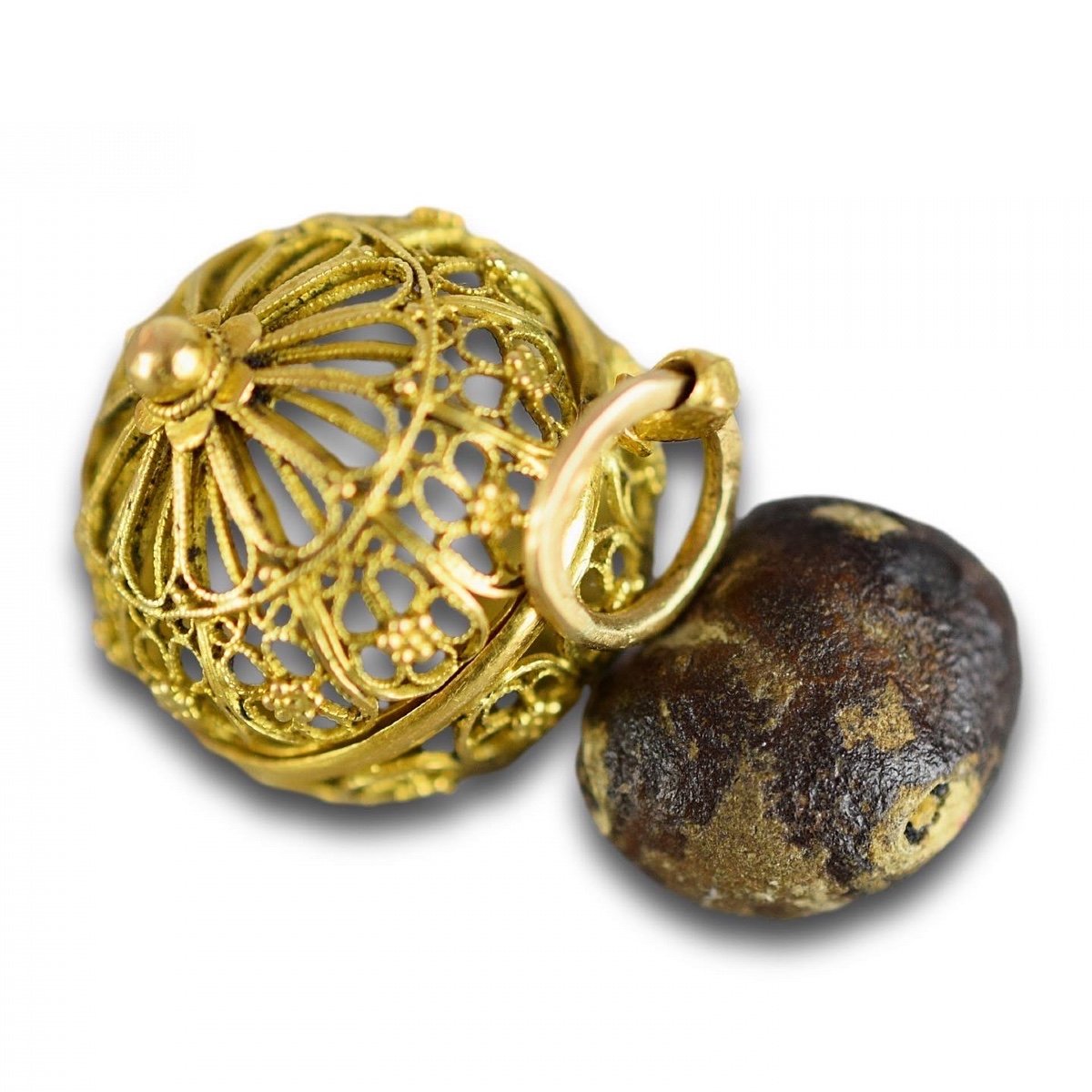



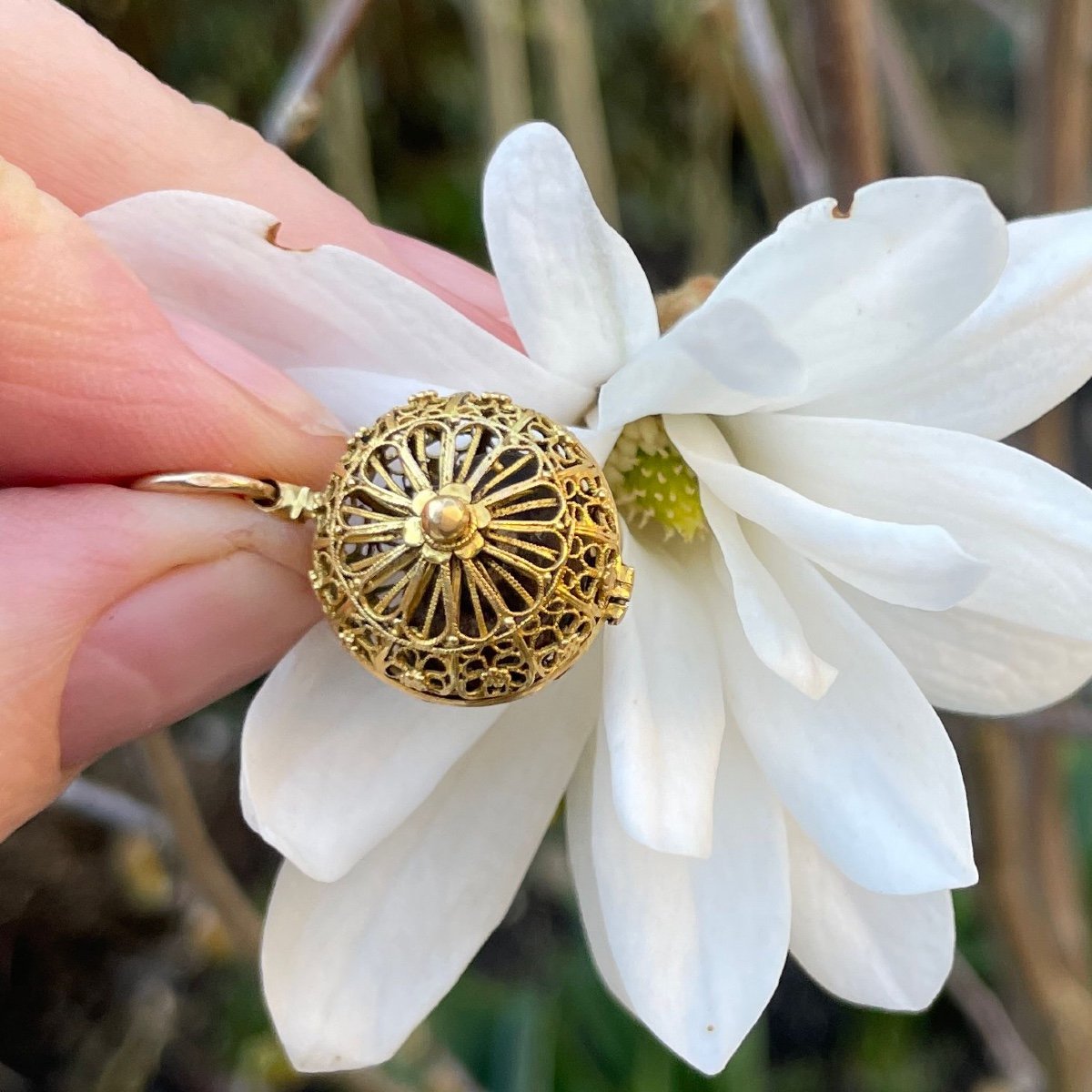

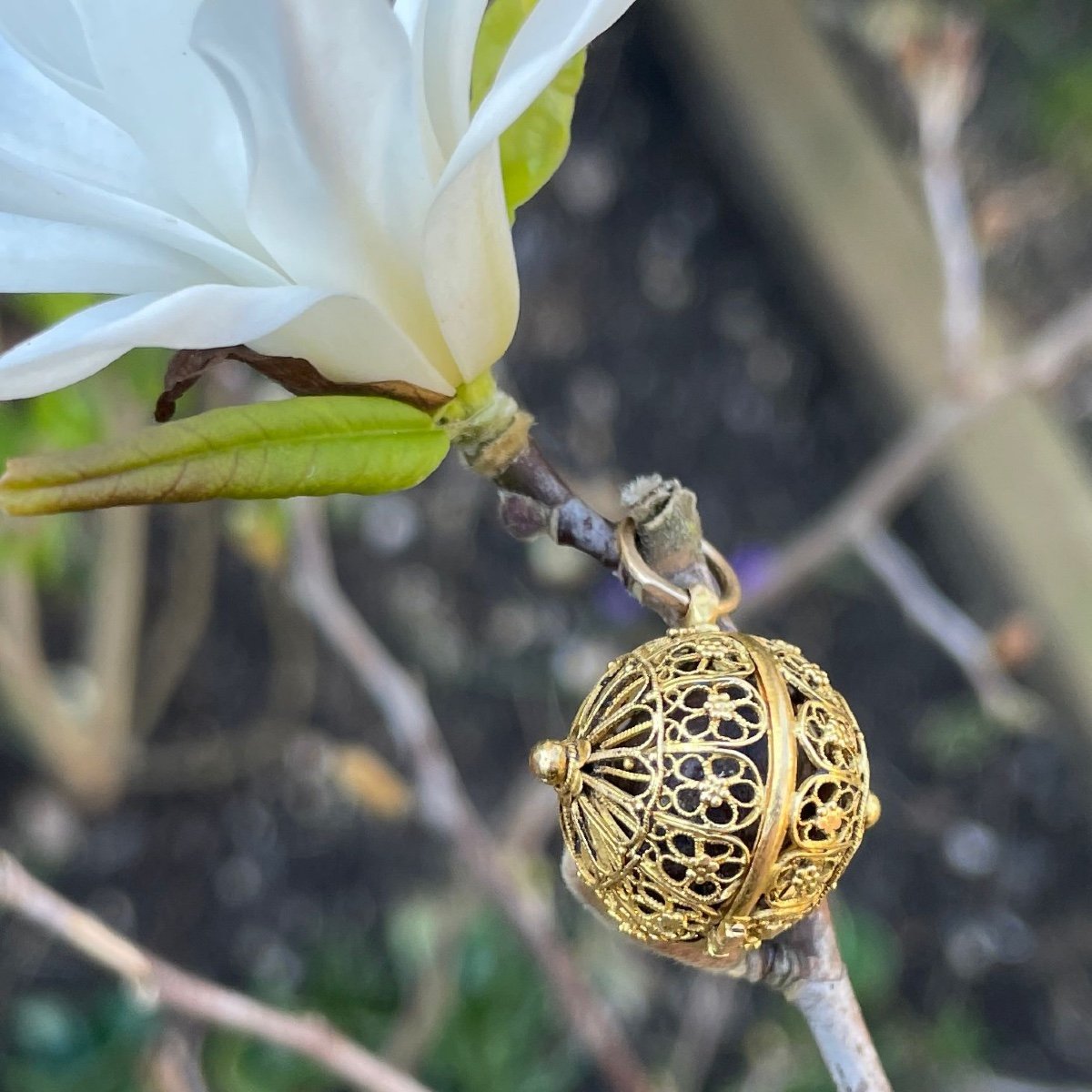

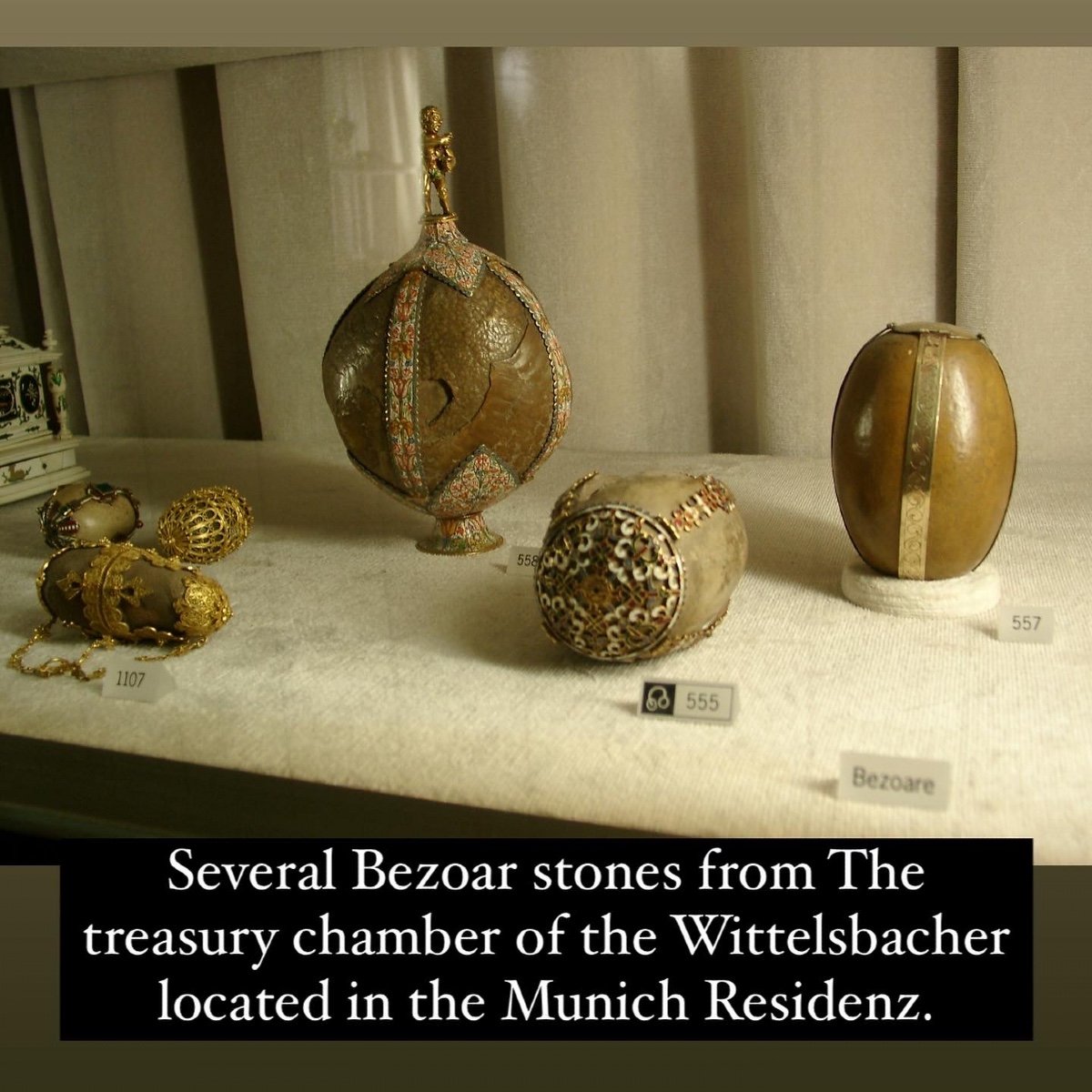
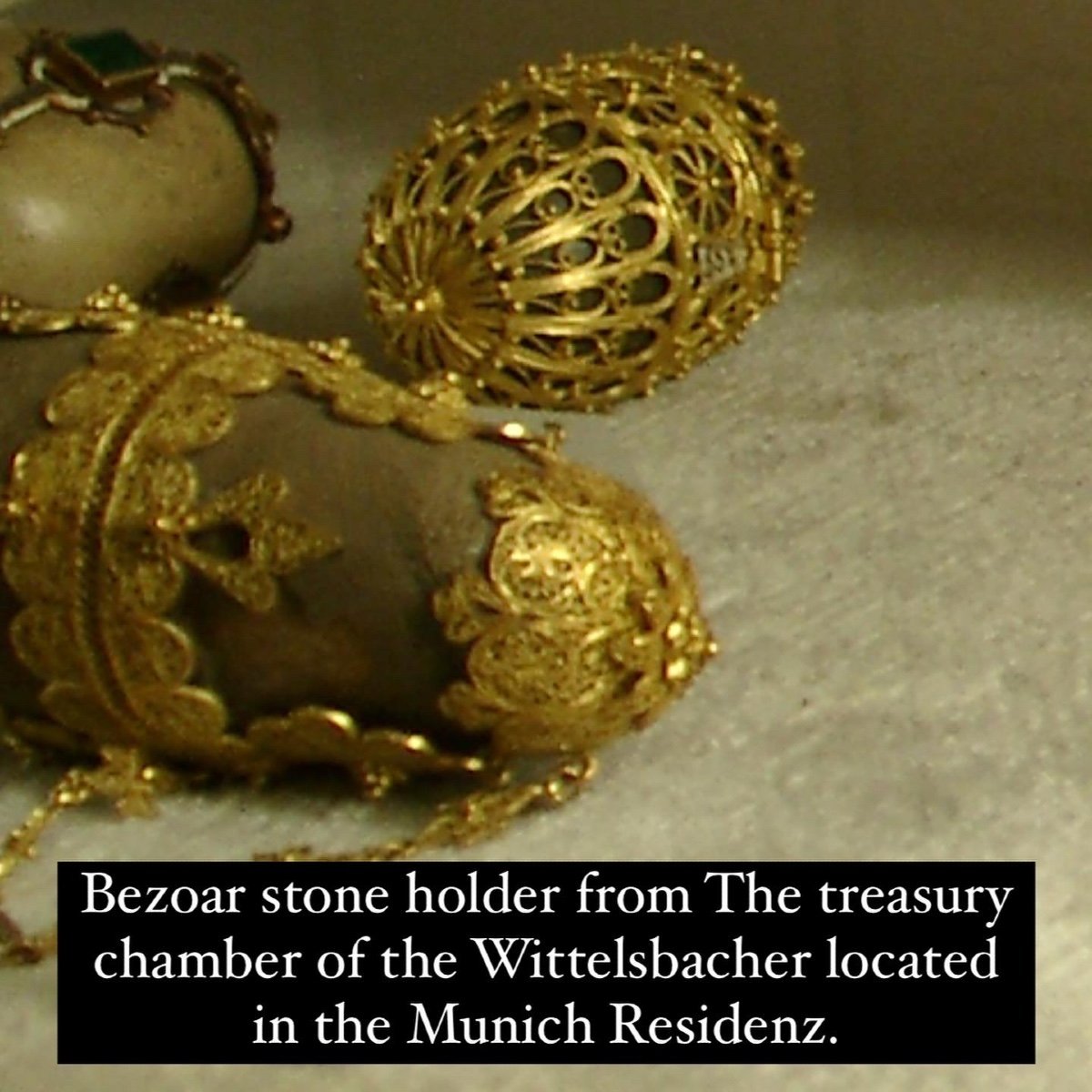
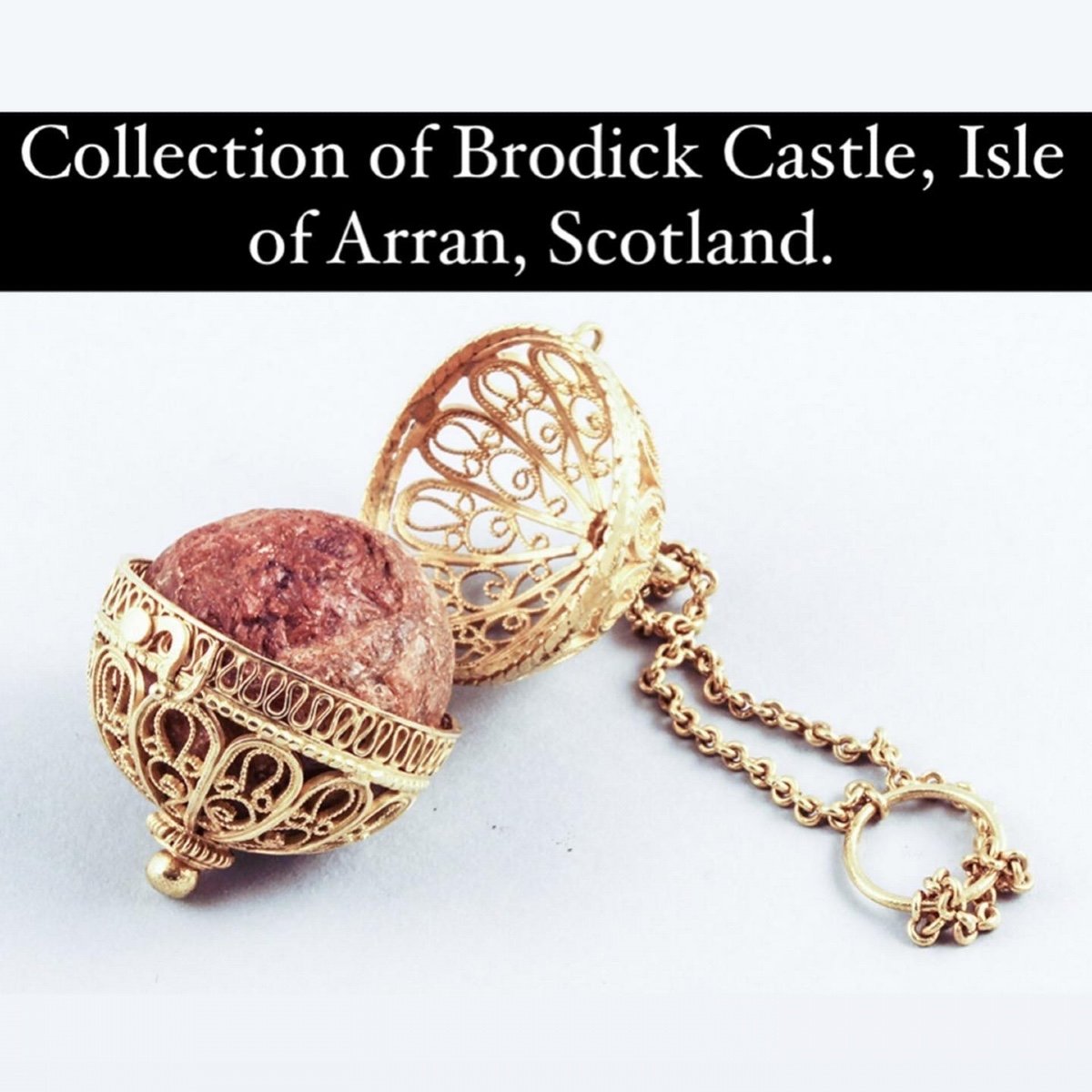
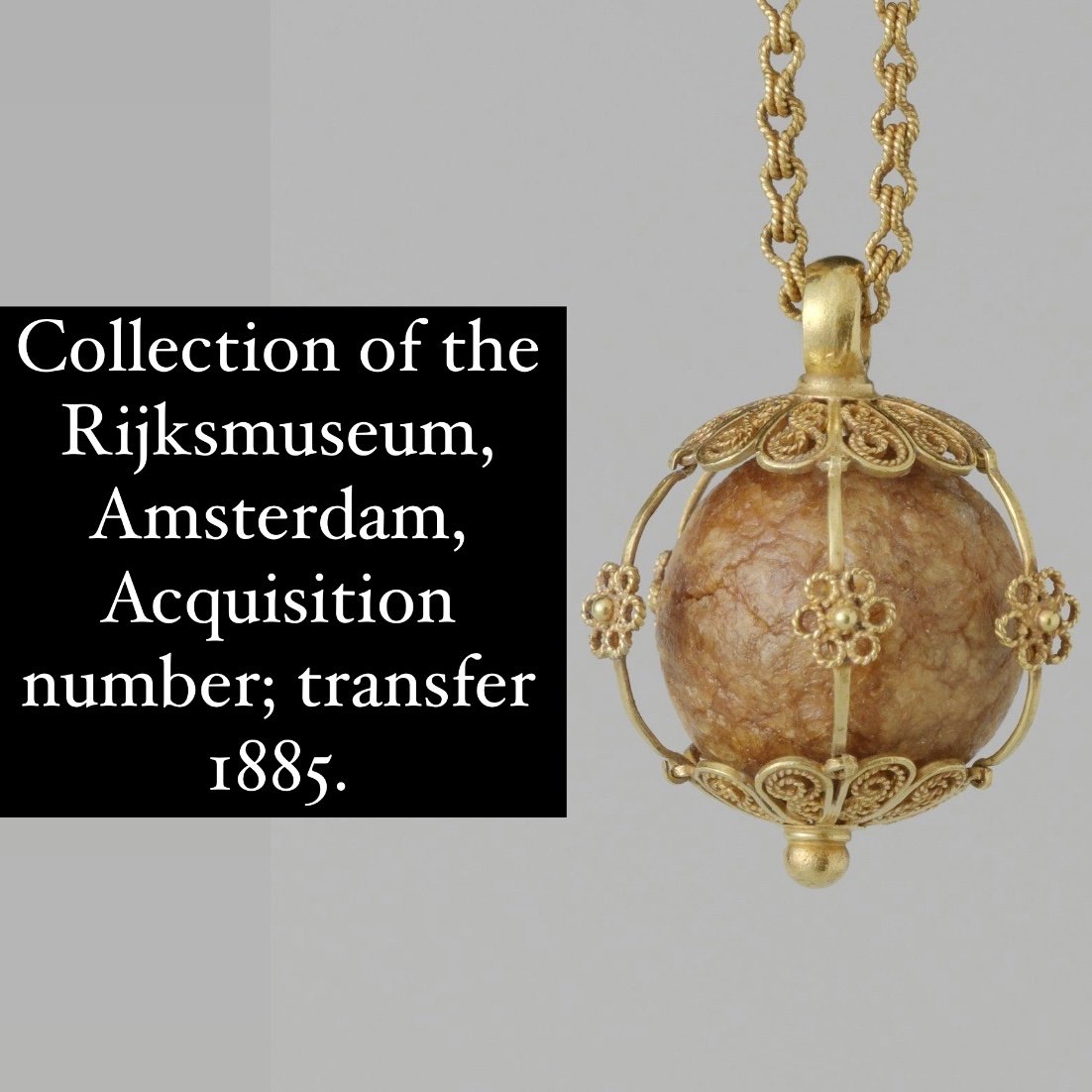
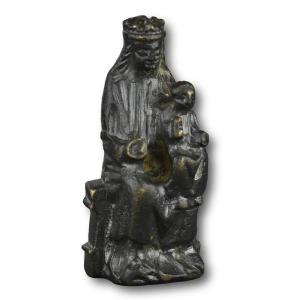


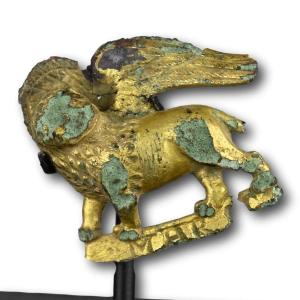
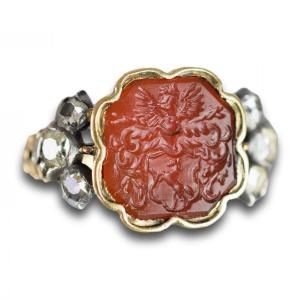
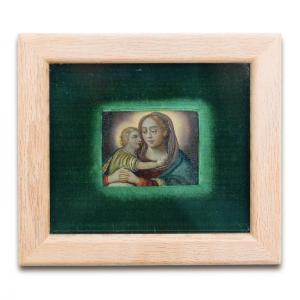

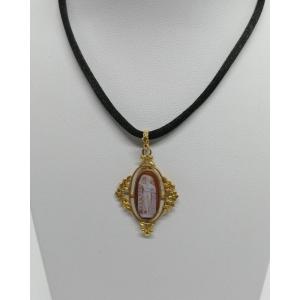
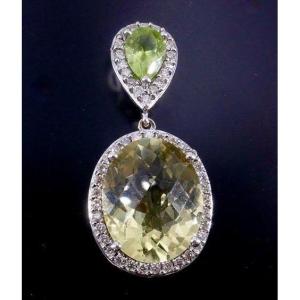






 Le Magazine de PROANTIC
Le Magazine de PROANTIC TRÉSORS Magazine
TRÉSORS Magazine Rivista Artiquariato
Rivista Artiquariato
